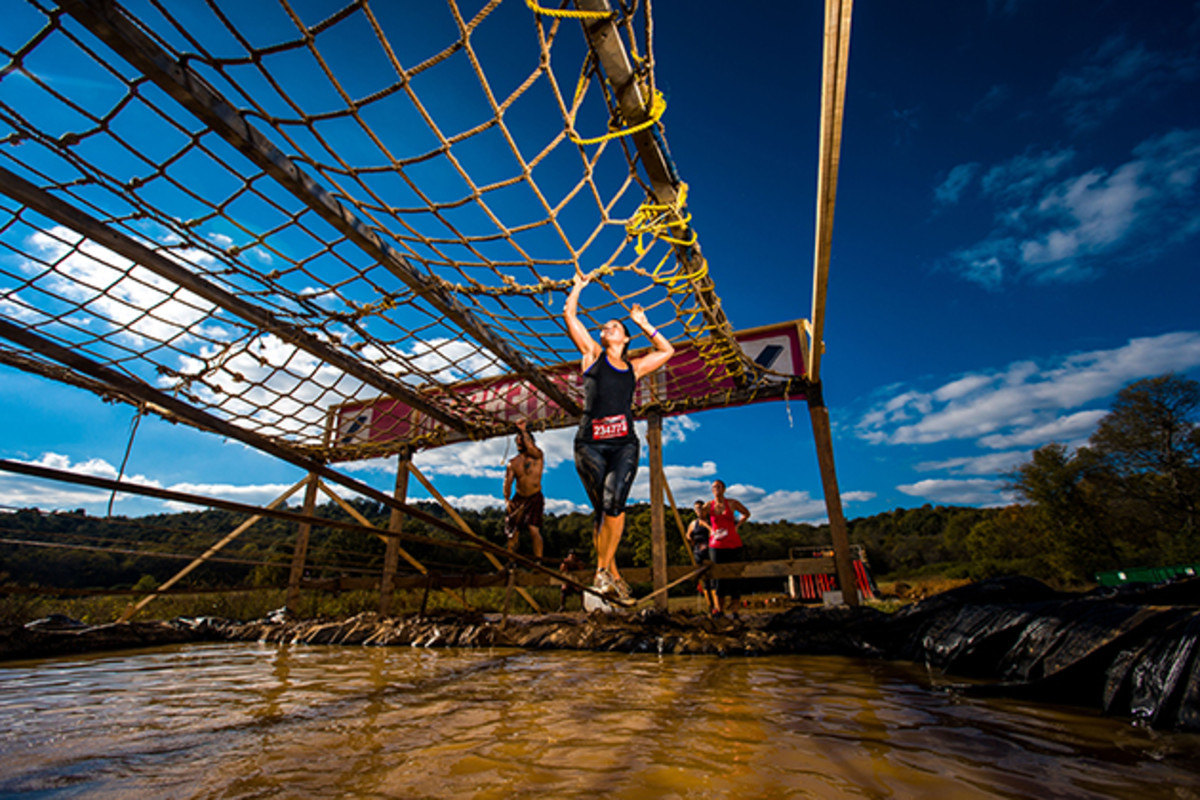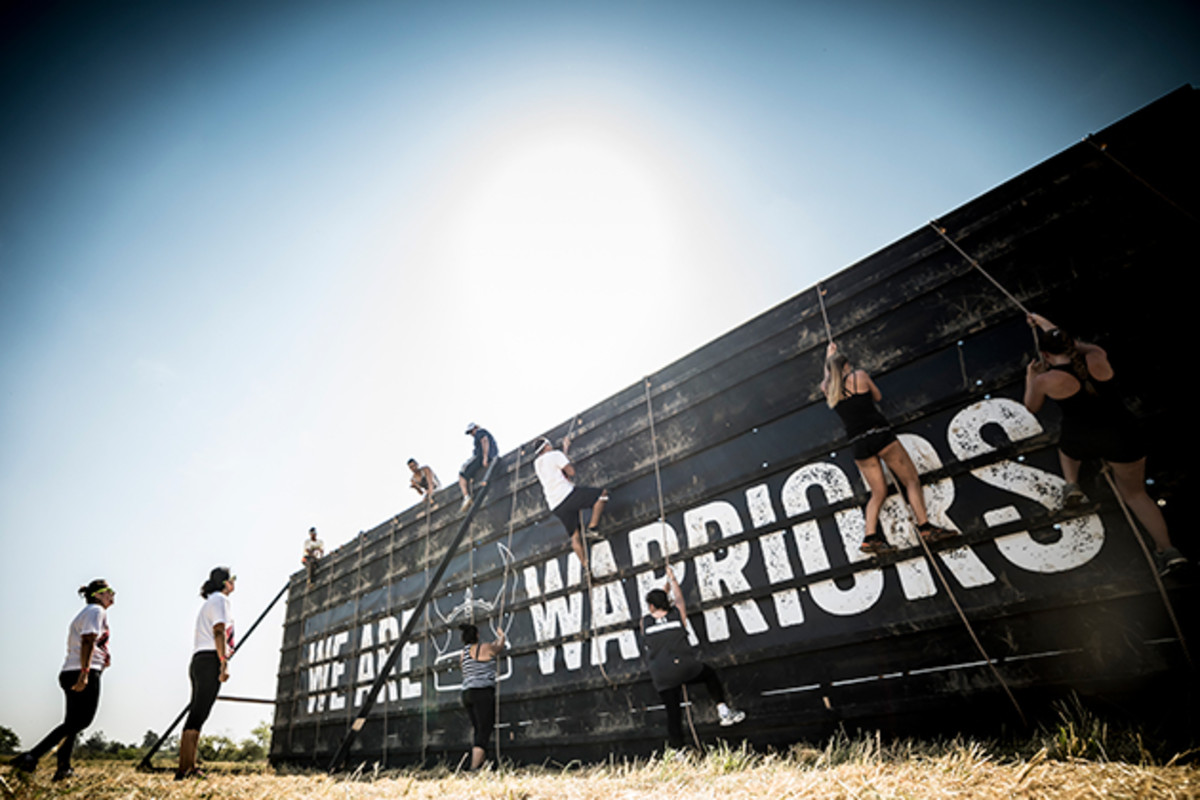Warrior Dash: Designing the obstacle-filled 5K experience for every athlete

Goliath. That’s the signature obstacle for Warrior Dash, an exhilarating 5K obstacle event that caters to a wide range of trail runners and athletes. In the race-ending Goliath, part of the allure comes atop the 18-foot deck as participants contemplate the 30-foot water slide into a mud pit.
“It is a fun one to watch,” Terry McMahon, course architect and designer tells SI.com. “People freak out at the top because it's so high, but they enjoy the ride down into the mud pit. Everyone wants that muddy photo they can share on social media. Every race ends with our mud pit.”
But not every race feels the same along the way. Warrior Dash’s new season starts in Florida in February, kicking off about two dozen events throughout North America for the year. Each course measures roughly 5K—anywhere from 3.1 miles to 3.6 miles—and uses the terrain of the geographic location to dictate changes in the course. Hey, even the mud changes with soil conditions. Each race comes with 12 built obstacles in addition to whatever the land offers up, whether it be streams or hills.
McMahon says Warrior Dash pulls about seven or eight obstacles out for every run, something they can put in water, something for hills and something for the special terrain of the land.

Two of the most popular involve water. A reverse waterfall has participants climbing to a top deck and descending a rock wall climb with flowing water, usually into a natural pond. Then there’s "Alcatraz," where McMahon uses giant adult Lego-like pieces positioned in the middle of a body of water as a platform. A cargo net stretches across the water, inviting participants to swim and climb to the floating platform before hitting the water once again.
The relatively short distance—and the fact that the race kicks off in waves every 15 minutes over the course of a day—has drawn a wide demographic for Warrior Dash. In the morning, events typically see participants accustomed to races running by themselves for time. As the day goes on, groups arrive, either using Warrior Dash as a way to get in shape or a fun fitness activity with friends. Balancing the needs of all the demographics can prove tricky when designing obstacles.
Post-NFL, Brendon Ayanbadejo found new rewards in OTF training
“We are definitely striving to make sure people can finish the race, but it will not be the easiest for someone new,” he says. “You can finish it if you have the will.”
Over the years, Warrior Dash has had to fine-tune the difficulty, always looking to create new obstacles that people can’t mimic in the gym. “We are putting people through experiences they are unfamiliar with,” he says. “The first time they are not sure the shortcut or how to do it. We start to play off what intimidates people, whether heights, claustrophobia, swimming, being dirty. It's really mentally taxing and demanding.”
With 12 obstacles in just over three miles, McMahon needs to plan carefully so obstacles don’t incur backups. The obstacles that can facilitate large groups get placed at the beginning of the race and the more demanding and intimidating obstacles crop up as things spread out. And McMahon is careful to not put two climbing or two crawling obstacles directly after each other. There’s plenty of other considerations too, such as not having a really muddy obstacle before participants climb a big wall. In the end, it is all about an effort to “create the best experience for the runner.”
When creating a new obstacle, McMahon says he explores anything from playground equipment and CrossFit gyms to rock climbing and abstract views of fitness trends. “Half the fun is getting yourself into crazy situations,” he says, “and trying new stuff out.”

Much like how McMahon lays out his course on the computer before putting it into action, he uses 3D mockups that people can interact with and see before entering the construction for a new obstacle.
While many obstacle events put a premium on teamwork, Warrior Dash instead places a focus on festival. Participants can engage with that by showing up in teams wearing costumes or engaging in the after-race DJ, beer, food, etc., the experience. Or they can simply run the race and be done with it.
“We definitely like to be a challenge race, but we focus a ton on the fun and overall atmosphere and experience,” McMahon says. “We are more than just the course, we try to create an overall experience.”
- MORE EDGE: Fitness Debate: Is it true that you can exercise too much?
An experience that often includes a mud-caked selfie.
Tim Newcomb covers stadiums, sneakers and training for Sports Illustrated. Follow him on Twitter at @tdnewcomb.
